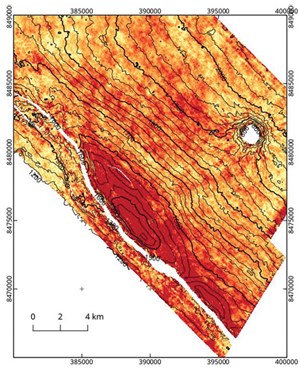What's new in exploration
OPEC announced plans to increase production in 2022. It appears that they are not caught up in the “kill fossil fuel” mania. I know OPEC has plans to replace reserves, is active in shooting new seismic, and is making deals to explore beyond their territorial reaches.
This past week I was watching [while not wearing a face mask] a couple wearing open, real-fur coats walking along a promenade at the Vail Ski Resort. They made sure all of us could read the message on their shirts, “Kill oil, Not polar bears.” They proceeded to walk to a waiting limo, all warmed up. A few days later at Breckenridge, I observed three high school girls waiting at a gondola sharing a joint [not with me], one wearing a “green” messaged coat. Their parents had dropped them off from a large SUV with Texas plates. A total disconnect between lifestyle and the freedom that energy brings to humanity.
Exploration lives. Unlike previous New Year predictions, I proclaim that exploration is not anywhere near dead, is doing well, and will supply fossil fuel long after most of us are no longer in need of physical energy. Starving humans; potential nuclear war with Iran/Israel; war with China/Taiwan or Russia/Ukraine; and the cost of living in old age; is more important to worry over than suffocation from methane or 1.7o of climate change. Remember, when paleo science was in vogue, maps of the Gulf of Mexico showed repeated sea level changes of over 700 vertical feet within the last 10 million years. Just move up topo if that is your anxiety.
The U.S. NOAA reminds us:
For much of its history, our planet has been hotter—sometimes much hotter—than it is today. But our planet has also been colder. Scientists may never know which period in our planet’s 4.54-billion-year history was the absolute coldest … Some of the coldest conditions struck over 2 billion years ago, after the rise of atmospheric oxygen. More deep freezes occurred between 750 and 600 million years ago. Although scientists debate exactly how extensive the ice coverage was during these times, the evidence indicates that ice reached sea level in equatorial regions. https://www.climate.gov/news-features/climate-qa/whats-coldest-earths-ever-been
At a RPSEA annual meeting in 2016, SPE presented figures that showed a vast majority of U.S. well production was less than 50 bopd per well, with horizontals dominating. The estimate then was no more than 8% OIP was recovered, compared to about 35% recovery in conventional wells after primary, tertiary, and about all other attempts to flow were made. That math is simple and profound. The practice of “flow ‘n go” production has not improved our thinking much. Current estimates from EIA (https://www.eia.gov/petroleum/wells/) confirm that we have not learned to overcome known reservoir limitations, such as liquid-to-gas pressure expansion.
I am not aghast at fracing, a mild seven-letter word. The media could care less that thousands of South Texas wells were fraced with city water from Alice, Texas. Not much to drink, but slick. Disposal of frac water into shallow wells has been a real problem, and it’s lazy. Efforts to improve disposal have given the greenies actual negative occurrences to bitch about. The production question is not “to frac or not to frac.” The issue is to improve recovery. A CO2 flood is a political miracle that greatly improves reservoir flow. The BIG however, is finding CO2 for your program.

Willing to try other approaches? Current research shows that natural gas with foam works (Rice University/University of Bergen), but not as good as CO2. Better than fracing? Maybe. How about inert chemicals that can be recovered and recycled? Several entities are working on that angle. See (https://www.shaleingenuity.com/) from our reader, Robert Downey [not the actor]. Papers can be found at SPE 206186 and SPE 208312. Aramco and Sinopec will not be far behind.
Water disposal. A 2021 University of North Dakota paper by O. S. Tomomewo, “Reducing produced water disposal via effective treatments methods and reuse: Proposed sustainable application for Bakken, North Dakota,” gives a constructive background to the water disposal volumes being used today for EOR. (https://commons.und.edu/cgi/viewcontent.cgi?article=4946&context=theses) New metrics for reservoir liquids are addressed in a SPWLA paper, “Integrated multiphysics workflow for automatic rock classification and formation evaluation using multiscale image analysis and conventional well logs,” 2020, Gonzalez, A., L. Kanyan, Z. Heidari, and O. Lopez, Petrophysics, 61(5), pp. 495–518. (www.doi.org/10.30632/PJV61N5-2020a7)
An exploration gift remains OpendTect (https://www.dgbes.com/index.php/
download). Dgb Earth Sciences now has more plug-ins than you can count, Fig. 1. 3-D visualization showing an up dip favorable zone is still king of the x.y.

- The reserves replacement dilemma: Can intelligent digital technologies fill the supply gap? (March 2024)
- Prices and governmental policies combine to stymie Canadian upstream growth (February 2024)
- U.S. producing gas wells increase despite low prices (February 2024)
- U.S. drilling: More of the same expected (February 2024)
- U.S. oil and natural gas production hits record highs (February 2024)
- What's new in exploration (January 2024)


